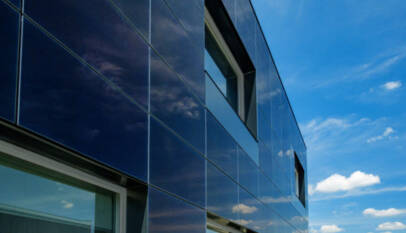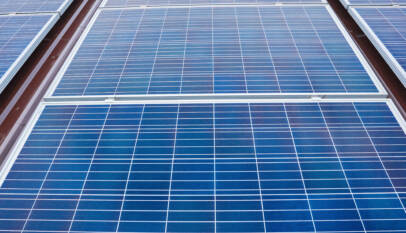
Solar panel facade integrates photovoltaic technology directly into the exterior surfaces of buildings, transforming walls into energy-generating assets. This approach not only produces clean electricity but also enhances architectural design by blending solar panels seamlessly with building aesthetics. Unlike traditional rooftop panels, facade systems enable renewable energy production without compromising space or visual appeal.
These systems use specially designed photovoltaic panels that serve dual purposes: energy generation and facade cladding. They can be installed on new constructions or retrofitted onto existing structures, offering flexibility in design and application. Their vertical orientation requires careful placement to maximize sunlight exposure while minimizing shading from surrounding objects.
By incorporating solar panel facades, buildings can reduce their carbon footprint while benefiting from durable and visually appealing surfaces. This technology represents a practical step toward sustainable urban environments where energy efficiency and architectural innovation coexist.
Understanding Solar Panel Facade Systems
Solar panel facades integrate photovoltaic technology into building exteriors to convert sunlight directly into electricity. These systems vary by design and components, enabling both new constructions and retrofits to generate renewable energy while maintaining architectural integrity.
What Is a Solar Panel Facade?
A solar panel facade is part of a building’s exterior that incorporates photovoltaic cells, allowing it to generate electricity from sunlight. Unlike traditional rooftop solar panels, these facades become an integral part of the building envelope, often replacing conventional facade materials.
They serve dual purposes: acting as a protective outer layer and producing clean energy. The technology supports sustainability goals by harnessing vertical surfaces for solar energy, expanding the available area beyond roofs. This approach is suitable for both new buildings and retrofitting older ones.
Types of Solar Facade Solutions
Solar facade systems fall mainly into two categories: Building Integrated Photovoltaics (BIPV) and Building Applied Photovoltaics (BAPV).
- BIPV replaces traditional facade materials, such as glass, metal, or cladding, with photovoltaic modules embedded within these surfaces.
- BAPV involves attaching photovoltaic panels onto existing exterior surfaces without replacing the building materials.
Additionally, adaptive solar facades use dynamic modules that adjust position or opacity to optimize solar capture and building performance. Solar facades can be opaque, semi-transparent, or designed as solar windows, providing design flexibility.
Design Principles and Integration
Effective solar panel facade systems require attention to orientation, shading, and aesthetic balance. Vertical or angled panels should maximize sun exposure while minimizing heat gain and glare. Facade design must harmonize with a building’s architectural style.
Integration considers structural support, electrical connections, and weatherproofing. Systems need to comply with local building codes and energy standards. Collaboration between architects, engineers, and solar technology specialists is key to achieving seamless incorporation of solar facades within both new and retrofit projects.
Key Components and Materials
The core component is the photovoltaic cell, typically made from silicon, responsible for converting sunlight into electricity. These cells are embedded in modules composed of layers for protection, durability, and efficiency.
Materials used include:
| Component | Purpose |
| Photovoltaic cells | Energy conversion |
| Glass or polymer | Transparent or protective layer |
| Frame (aluminum) | Structural support and mounting |
| Encapsulants | Environmental protection |
| Electrical wiring | Energy conduction and system connection |
Glass-based modules often serve as windows or semi-transparent facades. Metal panels with integrated cells replace cladding in opaque areas. Advanced facades may include dynamic elements to adjust solar absorption or lighting conditions.
Proper material selection balances durability, solar efficiency, and aesthetic qualities.
Benefits, Applications, and Considerations
Solar panel facades offer advantages beyond energy generation, influencing building design, costs, and installation logistics. They contribute to energy efficiency and sustainability, provide architectural flexibility, and require specific installation approaches. Evaluating costs and potential returns is essential for informed decision-making.
Energy Efficiency and Sustainability
Solar facades increase a building’s available surface area for capturing sunlight compared to roofs alone. This often results in higher total energy production, especially on urban sites where roof space is limited.
By integrating photovoltaic modules directly into the facade, buildings can reduce reliance on external energy sources, lowering carbon emissions. These systems support carbon neutrality goals, particularly in new construction and retrofits.
Performance depends on factors like orientation, shading, and panel type. Vertical installation may reduce peak energy output compared to tilted roof panels but extends generation throughout the day. Proper siting and shading analysis are critical to maximizing efficiency.
Architectural Flexibility
BiPV (Building-Integrated Photovoltaics) facade systems allow for diverse applications including curtain walls, glazing, and shading devices. They replace conventional building materials such as glass or metal cladding, seamlessly blending energy generation with aesthetics.
Design flexibility enables customization of size, shape, transparency, and color to suit architectural intent. This integration does not compromise structural or design goals, helping architects achieve both sustainability and visual harmony.
These systems can be used in new builds or retrofitted onto existing structures, providing adaptability across varied projects. Their versatility supports creative, energy-conscious design solutions without sacrificing appearance.
Installation Requirements
Facade solar panels require targeted installation techniques that differ from rooftop systems. They are mounted vertically on specialized support structures or directly integrated into the building envelope.
Site assessment must avoid shaded areas caused by neighboring buildings or trees, as shading considerably reduces energy output. Panels should be positioned to maximize sunlight exposure while maintaining facade functionality.
Installation complexity increases with integration depth—fully integrated PV materials replace conventional envelope components, requiring coordination with the building’s architectural and structural frameworks.
Maintenance access should be planned carefully since facades present different challenges than roofs for cleaning and repairs.
Costs and Return on Investment
Initial investment in solar facades is generally higher than standard rooftop systems due to custom design, materials, and integration complexity. However, they can offset costs by reducing the need for separate cladding materials.
Energy savings provide ongoing financial benefits, with payback periods affected by local energy prices, incentives, and system output. Projects aiming for sustainable certification or carbon neutrality may gain additional value.
Long-term durability and reduced operational costs contribute positively to return on investment. Careful planning to optimize energy generation and system lifespan is necessary to maximize financial outcomes.
The Role of Chassis Design in Ride Stability and Comfort
A chassis is one of the most important, yet neglected, factors when you are behind the whe…





